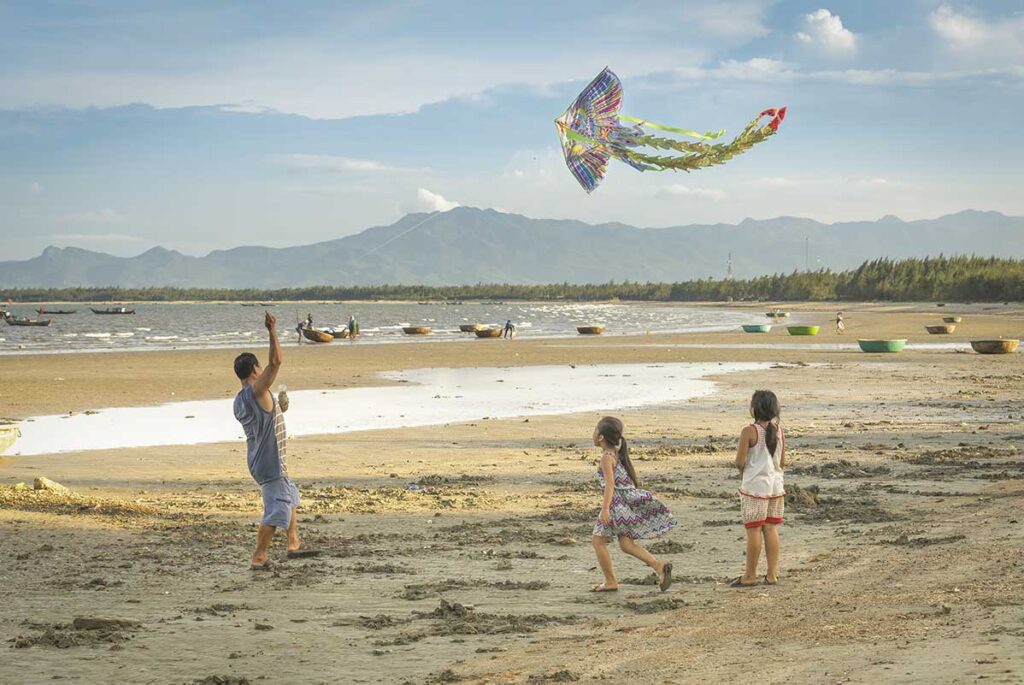What is Tam Hai Island like?
Tam Hai Island lies just off the coast of Quang Nam, surrounded by calm river channels and the open sea. It’s small enough to explore in a day, with narrow concrete roads winding through coconut groves, shrimp farms, and quiet fishing hamlets.
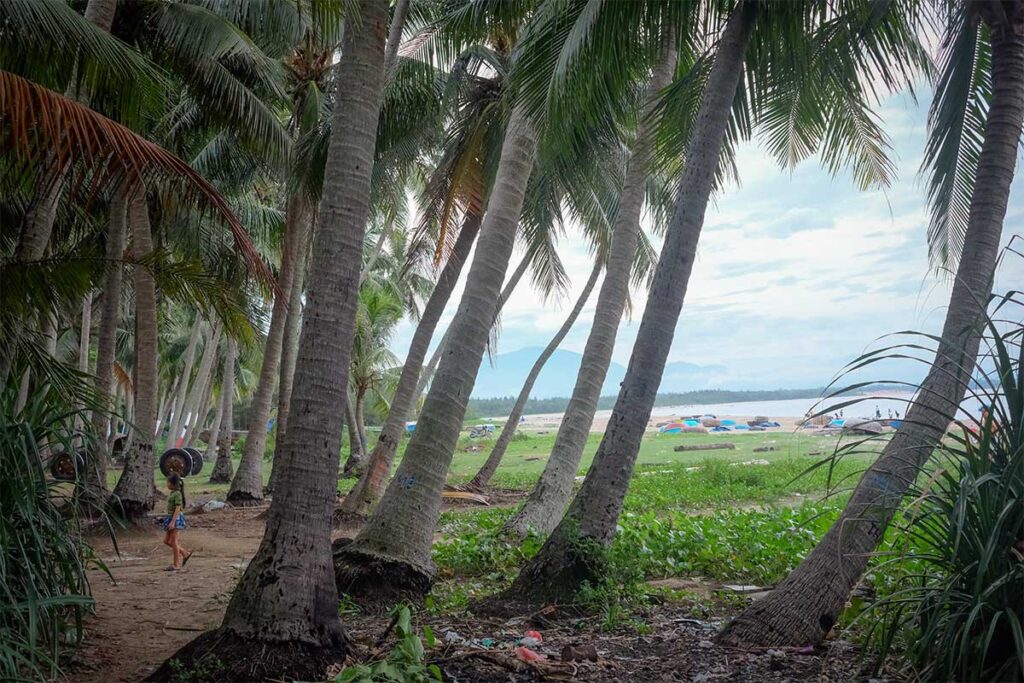
The island feels peaceful and slow, with daily life centered around the water — fishermen mending nets, families tending to boats, and murals painted on village walls adding a splash of color.

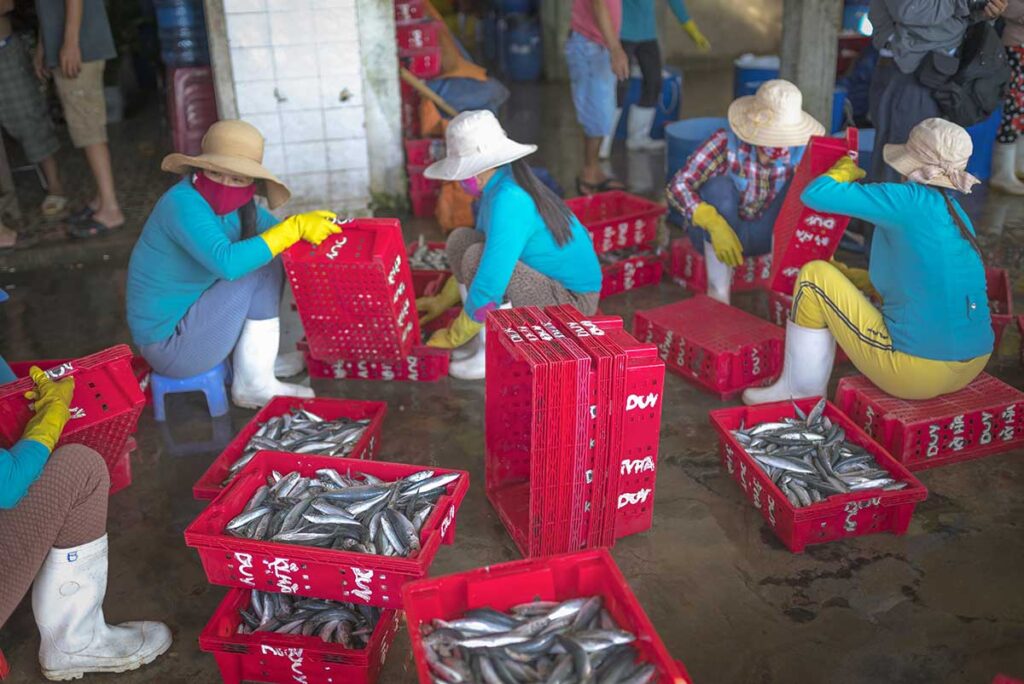
Yet, beneath this calm atmosphere, the island shows the downside of neglect. Many beaches that could be stunning are instead covered in trash brought in by currents and local waste.
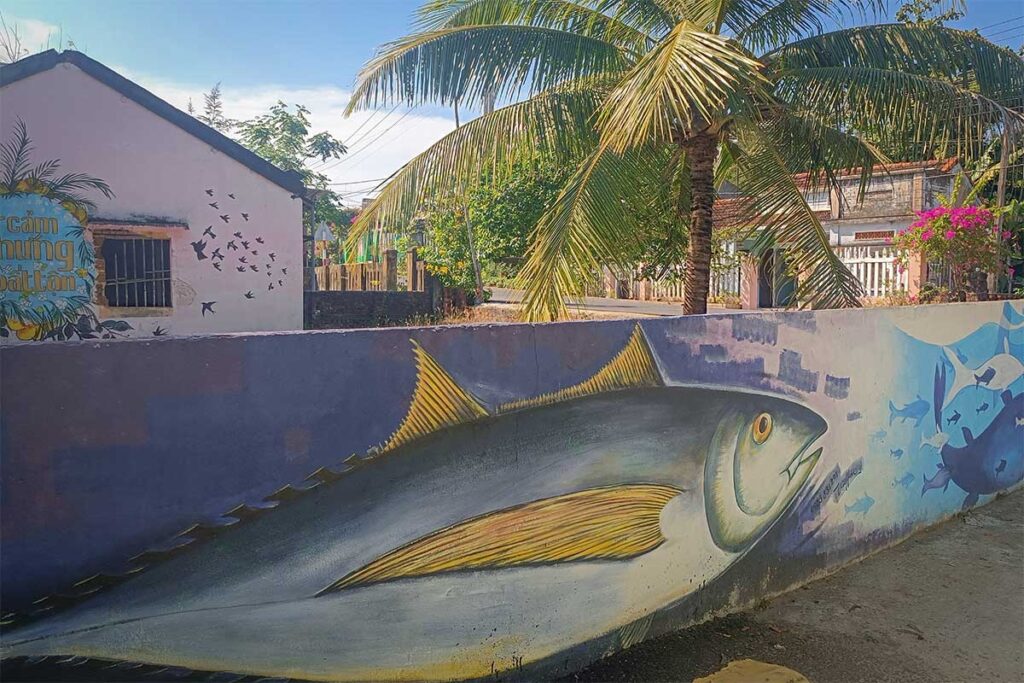
Facilities are basic, tourism remains minimal, and nature feels both beautiful and burdened. If it were closer to Hoi An and properly maintained, Tam Hai could easily rival Vietnam’s better-known coastal islands — for now, it’s a tranquil detour for travelers who appreciate authenticity over comfort.
Highlights of Tam Hai Island: What to See & Do
Tam Hai Island is not the kind of place packed with major attractions — its appeal lies in exploring at an unhurried pace. Most activities revolve around simple pleasures: cycling quiet lanes, kayaking along calm rivers, or visiting small cultural spots scattered across the island.
1. Cycling & Slow exploration

The best way to experience Tam Hai Island is slowly. Two small main roads cross the island, with plenty of quiet concrete lanes leading through coconut groves, shrimp ponds, and fishing hamlets. The terrain is flat, so cycling is easy even in the heat if you start early or late in the day.

You can usually rent bicycles at the ferry pier or from Le Domaine de Tam Hai Resort. A relaxed 1–2 hour loop lets you see most of the island, passing beaches, local shrines, and daily fishing life without needing a guide.
2. Kayaking & SUP on the River
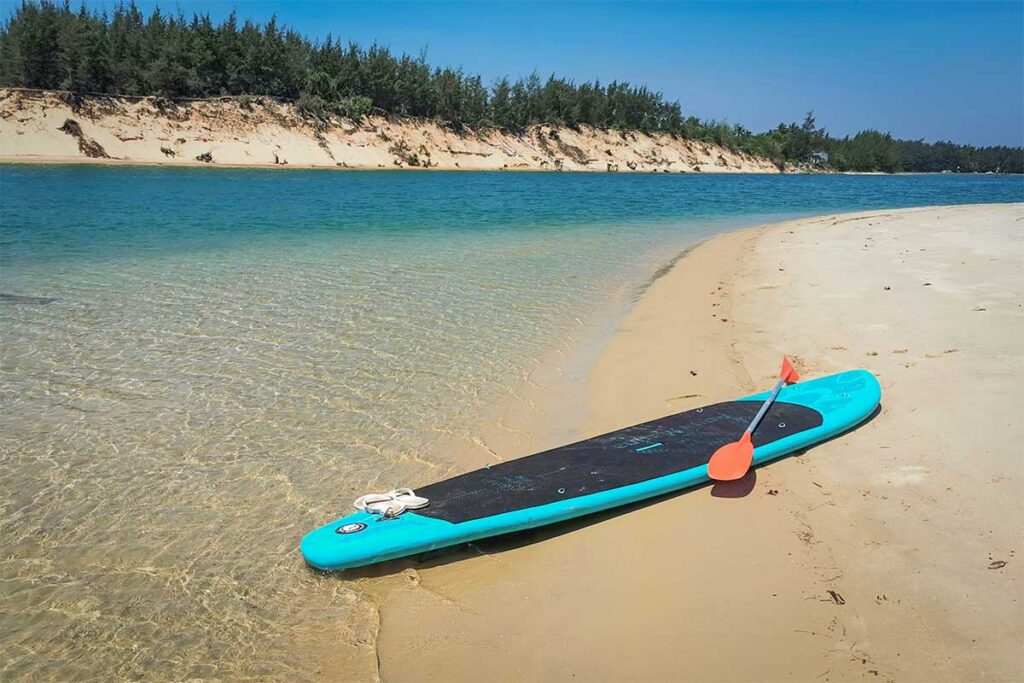
The calm river surrounding the island is perfect for kayaking or stand-up paddling. You’ll paddle past mangroves, sandbars, and local boats heading to sea. The water stays gentle except where the river meets the open ocean, where waves can pick up.
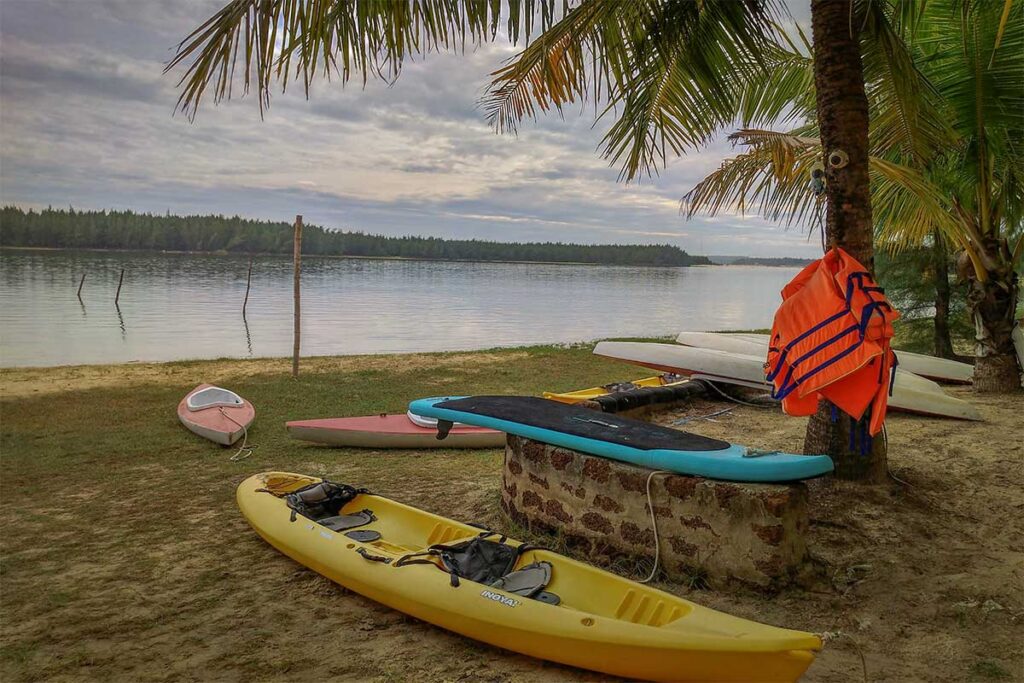
Rentals are easiest to arrange through the resort, which provides direct river access. It’s a peaceful way to explore the island’s natural side, especially in the morning or before sunset.
3. Walking & Short hikes
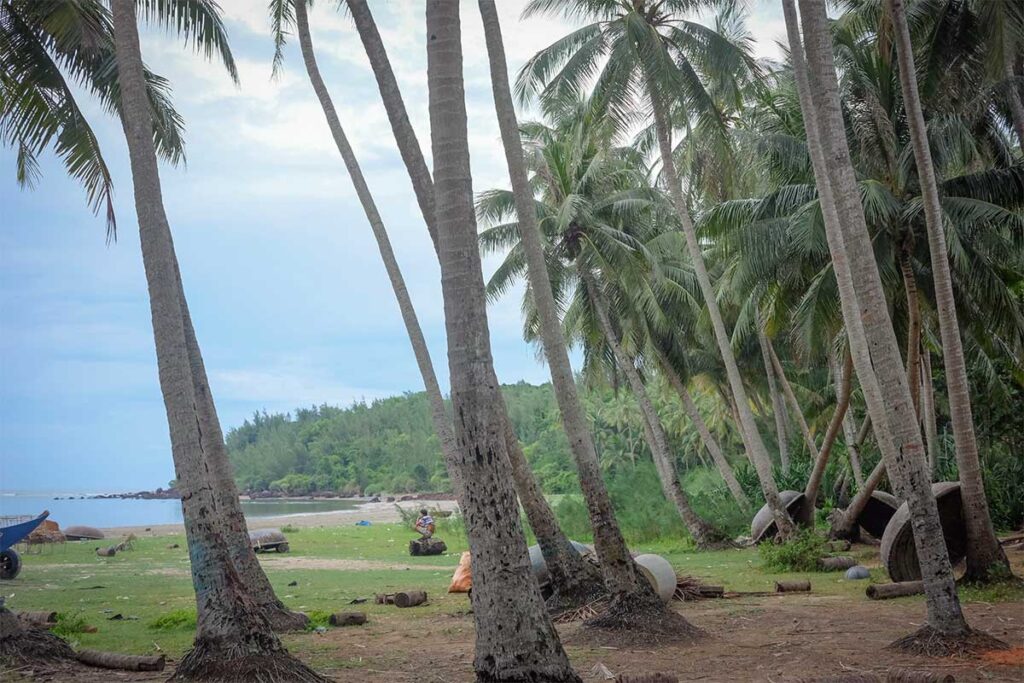
If you prefer walking, Tam Hai is small enough to explore entirely on foot. The northern part offers a short but scenic dirt trail leading up to a communications tower on a volcanic bluff, with broad sea views. From there, you can descend through coconut forest toward an ancient freshwater well that locals still use. The rest of the island is mostly paved and quiet, so wandering between hamlets is simple and safe.
4. Ban Than Volcanic Cliffs (Bàn Than)
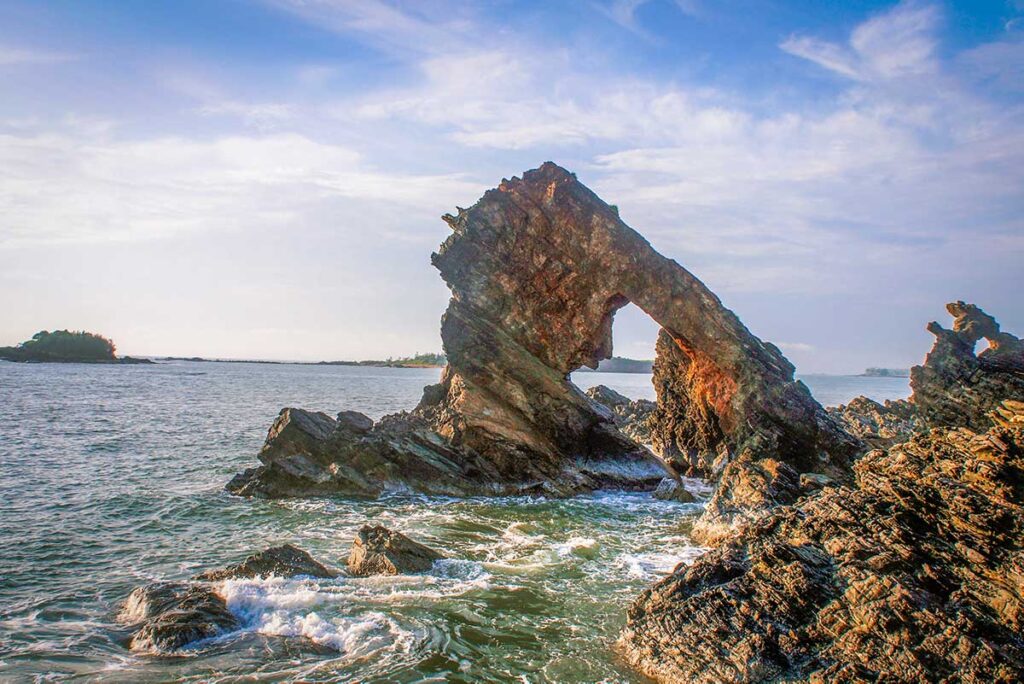
Located at the northern tip, Ban Than features dramatic black volcanic rock shelves carved by the sea. The area is photogenic but rough underfoot, so wear good shoes if you climb across the rocks. In calm conditions, the water below the cliffs is clear and suitable for a quick swim or snorkel, though be cautious of sharp edges and tides. Unfortunately, litter can collect here, especially after storms, but the view remains impressive.
5. Small outlying islets (Dao Da, Dao Da Chim)
A few small islands sit just offshore, visible from the northeast coast. Boat trips to these islets are sometimes offered by local fishermen or seafood restaurants near Ban Than. Dao Da is accessible and has small rocky coves, while Dao Da Chim is usually off-limits due to archaeological finds. Don’t expect pristine tropical beaches — the trip is more about the scenery and local adventure than swimming or lounging.
6. Swimming & Casual Snorkeling
Swimming is possible both in the calm river and at certain sea-facing spots, but choose carefully. The cleanest and safest swimming is near Le Domaine Resort or below the Ban Than cliffs, where the water is clearer. Some stretches of beach look inviting from afar but are heavily littered. Bring water shoes for rocky areas and avoid swimming after storms when debris washes ashore.

The best snorkel spots can be reached by boat tours.
7. Mural Hamlet


One of the small northern villages has been painted with bright seaside murals by local students. The artwork depicts fishing life, boats, and marine creatures, adding color to otherwise simple homes. It’s worth a short stop while exploring by bike or motorbike, but keep expectations modest — it’s more a nice surprise than a major attraction.
8. Whale cemetery & Small shrines

Scattered across the island are shrines devoted to the whale god, a protector of fishermen. The largest whale cemetery lies inland, where dozens of whales are buried under sand mounds. Locals visit to burn incense and pray for safety at sea. Visitors are welcome but should behave respectfully — it’s an active spiritual site, not a tourist attraction.
9. Simple seafood stops
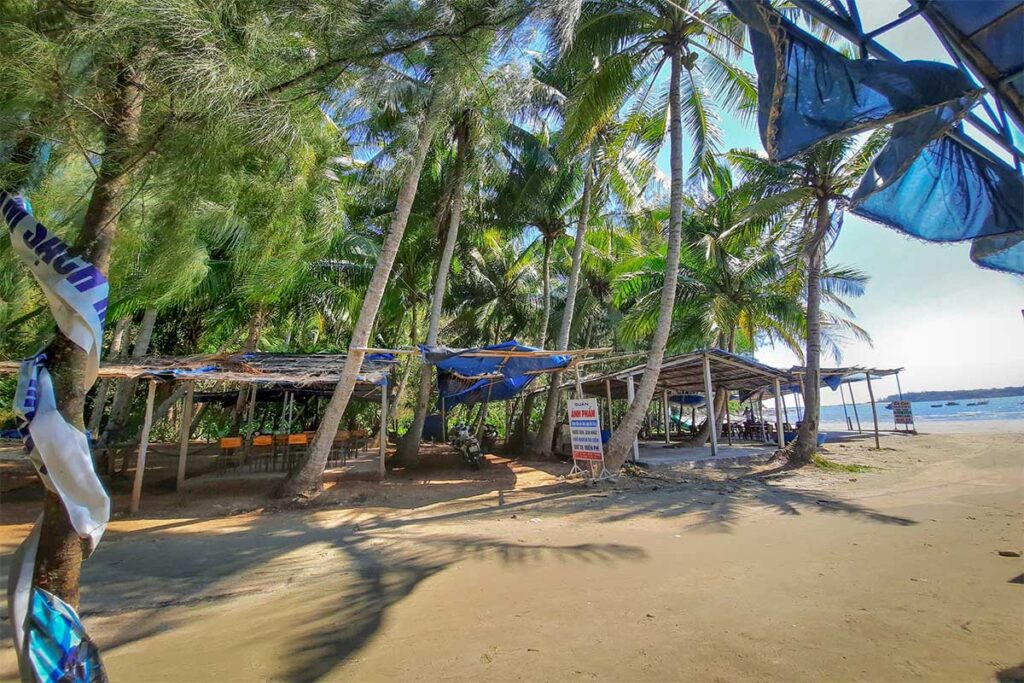
Fresh seafood is the main treat on Tam Hai. A few small restaurants and family-run eateries line the northern and eastern coasts, serving clams, crab, and fish at local prices. Dishes are simple but tasty and usually prepared from the morning’s catch. Most places close around midday for a rest, so aim to eat before 12:30 or after 1:30. For drinks or snacks, there are a handful of cafés near the main village and ferry pier.
Best time to visit Tam Hai Island
Timing matters when visiting Tam Hai Island, as the weather strongly affects the experience. The best months are from March or April until August, when the sea is calm, skies are clear, and ferries operate smoothly. This period is ideal for cycling, kayaking, or simply exploring without worrying about storms.
From September onward, heavy rain and strong winds can make crossings difficult and beaches messy with washed-up debris. Since there are no major festivals or events here, the “best time” mainly comes down to stable weather and safe, pleasant conditions for a quiet island trip.
Staying on Tam Hai Island
Accommodation on Tam Hai Island is limited, and that’s part of its charm. There are only a few small homestays and one proper resort, so travelers shouldn’t expect variety or nightlife. It’s quiet, remote, and ideal if you’re looking to read, relax, and enjoy a slow rhythm of life. Bring snacks or small essentials, as shops and restaurants close early and options are few. For most visitors, an overnight stay is less about comfort and more about experiencing island life without hurry or crowds.
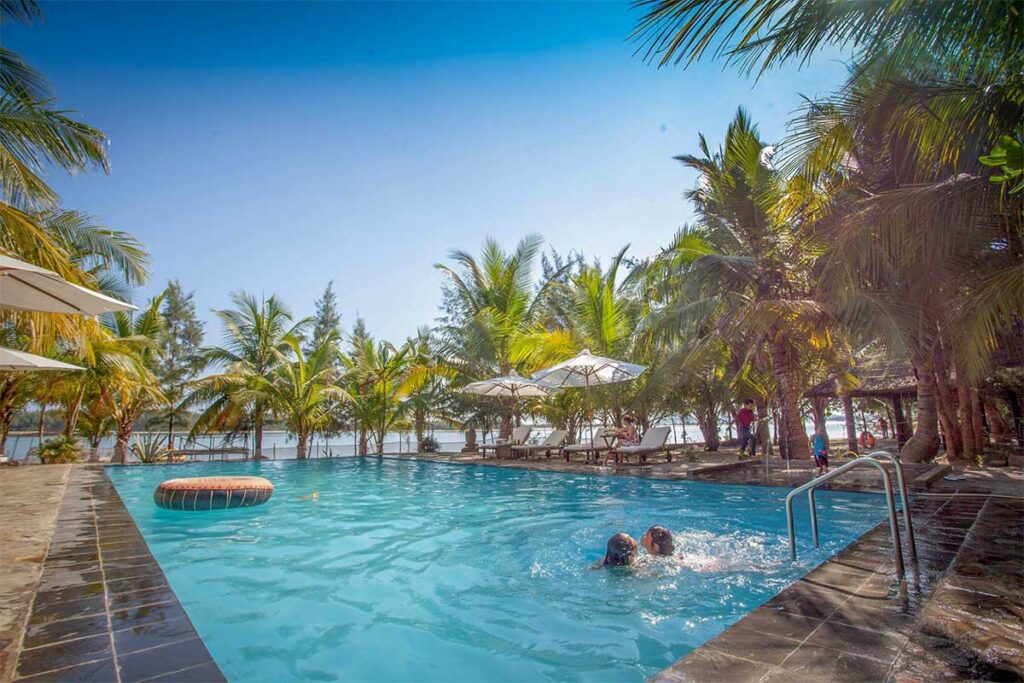
The main place to stay is Le Domaine de Tam Hai Resort, set under palm trees along the river. It offers spacious villas, a swimming pool, a small restaurant, and a laid-back beach bar — everything you need for a peaceful break. Guests can borrow bicycles or kayaks, or take short boat rides arranged by the resort. The setting is beautiful, but facilities show some age, and fresh water is limited, meaning showers are slightly brackish. It’s best suited for travelers who value tranquility and nature over luxury or entertainment.
How to get there
Where is Tam Hai Island?
Tam Hai Island lies in Quang Nam Province, about 62 kilometers south of Hoi An and just 8 kilometers from Chu Lai Airport. It sits across the Truong Giang River, which separates it from the mainland, and can only be reached by ferry — from the north via Tam Thanh (for travelers coming from Hoi An, Da Nang or Tam Ky) or from the south near Ky Ha Port (for those arriving from Chu Lai).
Renting a car with driver
The simplest and most comfortable way to reach the island is by private car with driver. Departing from Hoi An or Da Nang, the trip follows the scenic coastal road via Tam Thanh Mural Village before continuing south to the ferry point. Cars can board the southern ferry, but once on the island, they are limited to the main roads — side lanes are narrow and best explored on foot or by bike.
Driving a motorbike
For those riding themselves, the journey from Hoi An takes around two hours. Follow the coastal road past Tam Thanh and continue south until you reach the ferry pier at Ky Ha Port. Ferries can carry motorbikes easily, and boarding is straightforward: you pay a small fee in cash, drive onto the ramp, and ride off once across. On the island, traffic is minimal and navigation is simple, though most roads are narrow and local.
Ferries, Tickets & Hours
Two ferries serve Tam Hai Island — one in the north and one in the south. They operate roughly every 20–30 minutes during daylight hours, with a lunch break around midday. The fare is about 5,000 VND per person or 10,000 VND for a motorbike, paid directly to the operator. Bring cash, as there are no ticket counters or ATMs nearby. In rough weather or during storms, crossings can be delayed or suspended, so always check conditions before traveling.
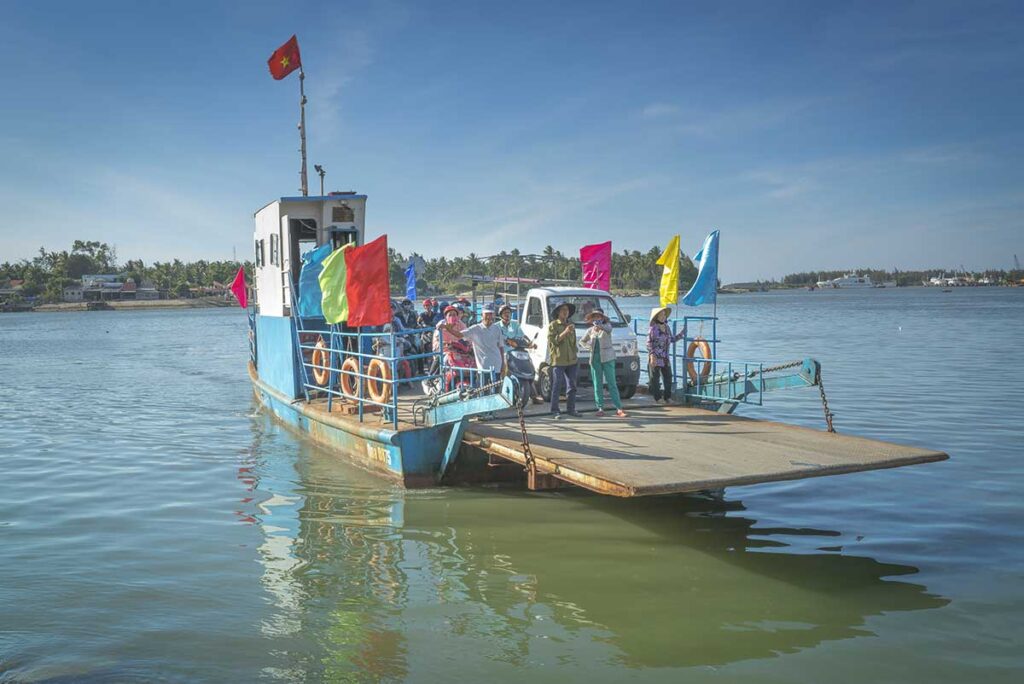
Practical information & Visiting tips
Visiting a small, undeveloped island like Tam Hai can be rewarding if you come prepared. Facilities are limited, transport depends on local ferries, and small conveniences you take for granted elsewhere may not be available here. A bit of planning goes a long way toward making your trip smoother and more enjoyable.
Money, Supplies & Connectivity
Bring enough cash for ferries, meals, and small expenses, as there are no reliable ATMs on the island. Shops are basic, so pack water, snacks, sunscreen, and insect repellent before you go. Internet and mobile coverage are inconsistent — expect to disconnect for a while, especially outside the main village or resort.
Facilities & Expectations
Shops and eateries are few, and most close for a midday break around lunchtime. Fresh water is scarce, so many accommodations use slightly brackish water for showers. Bring any medication or toiletries you might need, as there are no pharmacies or convenience stores.
Safety & Conditions
Wear sturdy footwear when exploring rocky or uneven areas, especially near the cliffs and beaches. Swim only where the water is calm and clear, and avoid strong currents around the river mouth. The island is very safe, but it’s wise to carry a small first-aid kit and any personal medication.
Etiquette & Photography
Respect local customs when visiting shrines or the whale cemetery — these are active spiritual sites. Dress modestly in villages, and always ask before photographing people. The community is welcoming, and a friendly gesture or greeting in Vietnamese goes a long way.
Smart route planning from Hoi An or Da Nang
If you’re traveling from the north, plan a few worthwhile stops along the way. Tam Thanh Mural Village makes a nice detour, as do the quiet local beaches of Binh Minh and Tinh Thuy. Allow extra time for the ferry crossing and take it slow once you’re on the island — the relaxed pace is part of the experience.
Costs snapshot
Ferry tickets cost about 5,000 VND per person and 10,000 VND for motorbikes. Meals in local restaurants range from 50,000 to 120,000 VND, depending on the seafood. Simple boat trips to nearby islets cost only a few dollars, and bicycle or kayak rentals — usually available through the resort — are inexpensive.
Environmental note for visitors
Tam Hai’s biggest challenge is litter, so keep expectations realistic. Do your part by not leaving any waste behind and disposing of trash properly on the mainland. A small cleanup effort during your visit, even collecting a few bottles or cans, is always appreciated by locals.
Is Tam Thanh worth a visit?
Tam Hai Island is best seen as a slow, scenic detour rather than a beach destination. The drive from Hoi An along the coast is beautiful in itself — passing Tam Thanh Mural Village, quiet local beaches, and even the Ky Anh Tunnels if you have time. The short ferry crossing adds a sense of adventure, and once on the island, it’s easy to explore the narrow roads, have lunch or a drink at Le Domaine de Tam Hai Resort, or rent a kayak for a short paddle before heading back.
But come with the right expectations. This is not the hidden tropical paradise some photos might suggest. The beaches are long, quiet, and could look postcard-perfect, but the amount of litter makes them difficult to enjoy for swimming or relaxing. Facilities are minimal and the focus is on local life, not comfort. If you value peaceful scenery, the journey itself, and a glimpse of real coastal Vietnam, Tam Hai can be a memorable experience. If you go hoping for a clean, idyllic beach day, you’ll likely find it disappointing.
